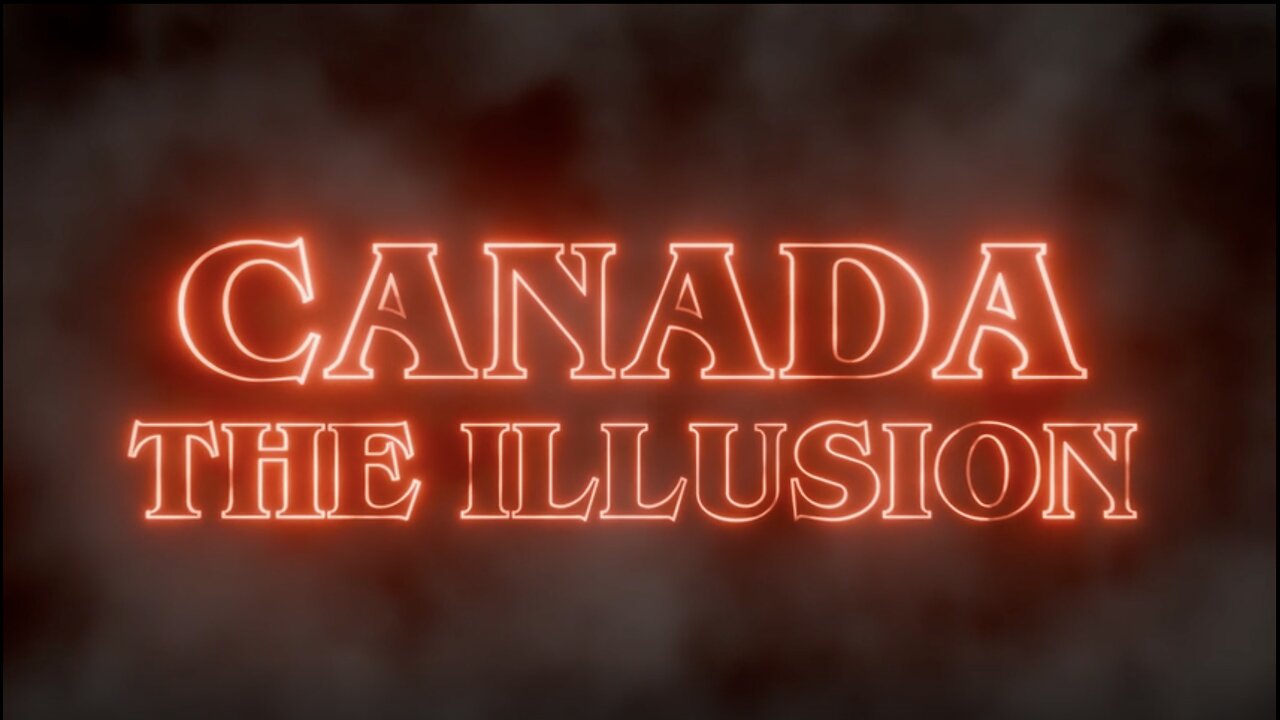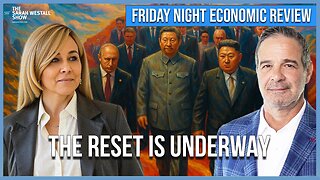Premium Only Content

Documentary Film - Canada the Illusion
Everything in Canada Since December 11, 1931 has been illegitimate, null and void.
Summary of "Canada: A Land of Illusion and Deception"
The narrative presented in the provided text challenges the conventional understanding of Canada’s history, sovereignty, and governance, asserting that Canada has never been a truly independent nation but rather a cleverly disguised colony of Great Britain. It argues that the Dominion of Canada, established through the British North America Act (BNA Act) of 1867, was not a step toward self-governance but a mechanism for continued British control, with subsequent legal and political developments reinforcing this deception. The text culminates in the claim that the Statute of Westminster in 1931 inadvertently granted sovereignty to Canada’s provinces, rendering all federal governance since then illegitimate. Below is a 1000-word summary of the key points, arguments, and conclusions.
Historical Context and the Formation of the Dominion
The text begins by painting Canada as a land celebrated for its beauty, kindness, and prosperity, but it quickly introduces an undercurrent of unease, suggesting that this image is a facade. It posits that Canada’s history is a theatrical performance designed to obscure the truth of its colonial status. The narrative traces Canada’s origins to the 1759 Battle of the Plains of Abraham, where Britain defeated France, renaming the colony the Province of Quebec. Subsequent divisions and mergers—such as the 1791 Constitutional Act creating Upper and Lower Canada and the 1840 Act of Union forming the Province of Canada—set the stage for the 1864 Quebec Conference, where colonial delegates discussed forming a federal union under a constitutional monarchy.
However, the text argues that the 1867 BNA Act, which created the Dominion of Canada, was not a step toward independence- independence but a British scheme to maintain control. During the American Civil War (1861–1865), Britain’s support for the Confederacy created tensions with the United States, which demanded reparations for damages caused by British-built Confederate ships. To avoid war or payment, Britain, under Queen Victoria, devised a plan to grant Canada nominal self-governance while retaining ultimate authority. The BNA Act, passed on March 29, 1867, and effective July 1, 1867, established the Dominion of Canada, but the text claims it was never ratified by the colonies and remained British property, stored in the UK’s archives.
The BNA Act and British Control
The text scrutinizes the BNA Act, highlighting its preamble, which it claims was altered to suggest the colonies requested federal union, implying consent that never occurred. It cites the 1889 Interpretation Act, defining a dominion as a British possession and a colony, reinforcing Canada’s subordinate status. Section 2 of the BNA Act extends its provisions to British monarchs’ heirs, and Section 109 assigns natural resources to the provinces, but the text argues these were nominal concessions. The Dominion expanded through land acquisitions—like the 1868 Rupert’s Land Act and the 1871 British Columbia Terms of Union—but ultimate title remained with the British Crown and Chancery, not the monarch or the colonies.
John A. Macdonald, a key figure in Canada’s formation, is portrayed as a British loyalist who betrayed the colonies. Knighted and appointed (not elected) asSaved by the Governor General, Macdonald, a Freemason and member of the Masonic Knights Templar, is accused of representing British interests in the 1871 Treaty of Washington, ceding Canadian territories to the U.S. and securing personal rewards, including titles and a marriage to Susan Agnes Bernard, cousin of a British privy councilor. The text labels him a traitor, undermining his legacy as the “Father of Confederation,” arguing no confederation occurred.
The Letters Patent and the Governor General
The 1878 Letters Patent Revocation Act formalized the Governor General’s office, granting it authority as a “corporation sole” appointed by the Crown and Chancery, not the monarch. The text argues this made the monarch a figurehead, with real power held by the Governor General and the Privy Council. The 1893 Statute Law Revision Act repealed Section 2 of the BNA Act, which tied the act to British monarchs’ heirs. When Queen Victoria died in 1901, the BNA Act allegedly “died” with her, though the Dominion continued under Edward VII due to the 1878 Letters Patent and 1889 Interpretation Act.
The Statute of Westminster: A Hidden Liberation
The pivotal moment comes with the 1926 Imperial Conference and the 1931 Statute of Westminster, which the text claims transformed Canada’s provinces into sovereign states. Section 2 removed British colonial law from the Dominion, Section 7 extended this to provinces, and Section 11 severed the colonial tie, overriding the 1889 Interpretation Act’s definition of a colony. This, the text argues, ended the Dominion of Canada and the Governor General’s authority, as the Crown and Chancery lost allodial title to the land, which reverted to the people of each province.
The text asserts that no confederation occurred because the provinces were not sovereign before 1931. Thus, each province became a sovereign state, not a unified nation. Consequently, all federal governance since December 11, 1931—every law, act, prime minister, and governor general—has been illegitimate, as no province held a constitutional convention to establish a de jure government.
Post-1931 Deceptions
Despite this sovereignty, the text claims the fraud continued. In 1936, an illegitimate Canadian Parliament attempted to revise the Statute of Westminster to perpetuate the BNA Act, but lacked authority without a valid Governor General. The 1947 letters patent appointing a Governor General, signed solely by Prime Minister Mackenzie King, were invalid, as only the Crown and Chancery could issue them. The 1948 Income Tax Act, 1952 Royal Style and Titles Act (proclaiming Elizabeth II “Queen in Right of Canada”), and other laws were similarly null.
The 1982 Canada Act, or Constitution Act, is described as Pierre Trudeau’s “grand deception.” Touted as patriating the BNA Act, it was never ratified, as Quebec did not authorize the necessary proclamations under Sections 58 and 59. The Charter of Rights and Freedoms, part of the act, applies only to “persons” (legal fictions), not living people, and operates under maritime law, not common law. The text argues it was designed to subjugate Canadians by treating them as corporate entities under a ship-like charter, not a constitution established by the people.
The Current State and Call to Action
The text concludes that Canada is not a country but a geographical area of sovereign provinces, as defined by the 1985 Interpretation Act, which excludes land, focusing only on waters and airspace. By identifying as “persons” (e.g., via IDs or birth certificates), Canadians submit to maritime law, losing unalienable rights. Equalization payments to Quebec—over $122 billion annually—are suggested as a reason for its silence on the fraud.
The solution involves education, rejecting symbols like the Canadian flag (a corporate trademark), and using the Socratic method to awaken others. Each province must hold a constitutional convention to draft a constitution and seat a de jure government, free from corporate interference (e.g., bar attorneys). Only then can provinces discuss federation if desired. The text warns of “communist tyranny” under an illegitimate system and predicts suffering may be necessary to spur change, quoting Buckminster Fuller: “To change something, build a new model that makes the existing model obsolete.”
Conclusion
The narrative reframes Canada’s history as a deliberate deception, orchestrated by British elites and complicit Canadian figures like Macdonald and Trudeau. It argues that the Statute of Westminster inadvertently liberated the provinces, but ignorance and indoctrination perpetuated the illusion of a unified, independent Canada. By recognizing their sovereignty and rejecting corporate constructs, Canadians can reclaim freedom, though the path requires dismantling decades of conditioning and building new, lawful governance structures.
-
 LIVE
LIVE
Laura Loomer
4 hours agoEP142: Loomer Prompts Calls For FBI To Investigate Palestinian Youth Movement
621 watching -
 LIVE
LIVE
Man in America
6 hours agoExposing the Cover-Up That Could Collapse Big Medicine: Parasites
824 watching -
 1:09:11
1:09:11
Sarah Westall
3 hours agoRead the Signs: Are We Already Operating in a New Financial System? w/ Andy Schectman
2.13K1 -
 LIVE
LIVE
Flyover Conservatives
6 hours agoRicky Schroder Exposes How Hollywood Planted Him as a Child Star | FOC Show
735 watching -
 6:02
6:02
Blackstone Griddles
3 hours agoPrime Rib Brisket Burgers on the Blackstone Griddle
140 -
 1:14:07
1:14:07
Glenn Greenwald
7 hours agoGlenn Takes Your Questions: Billionaires, Bari Weiss and Journalism | SYSTEM UPDATE #509
53.4K29 -
 LIVE
LIVE
StevieTLIVE
1 hour agoFriday Night HYPE Warzone Games with Stevie
110 watching -
 LIVE
LIVE
SavageJayGatsby
22 hours agoLet's Play: Sea of Thieves | Friend Friday
108 watching -
 LIVE
LIVE
GritsGG
2 hours agoTop 250 Ranked Grind! Dubulars!🫡
45 watching -
 19:51
19:51
Robbi On The Record
23 hours agoElectronic Tattoos Measuring Thoughts? From iPhone to iSkin
22.3K19